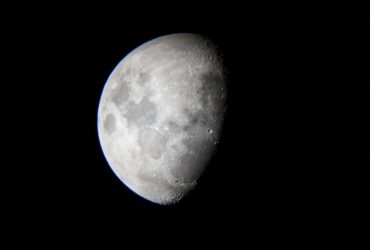How Astronomy Benefits Society and Humankind
From the earliest days of recorded history, human beings have looked to the heavens to navigate the seas, determine growing seasons, and gain a sense of context regarding our place in this vast universe.
While the ancients may have gotten a few things wrong about the heavenly bodies (after all, some planets and stars were worshipped as gods), the role of astronomy in understanding life as we know it has always been undeniable.
In today’s technologically advanced world, millions of dollars are spent each year funding various astronomy efforts, telescopes have changed and improved, from NASA’s Hubble Space Telescope to the world-class Keck Observatory, which requires more than $53,000 per day to operate.
While most of us can find something fascinating or awe-inspiring about outer space, is astronomy important enough to justify spending that much money? How exactly is astronomy useful to our world today? Below are some important points that illustrate how astronomy benefits society and humankind.
How Astronomy Has Influenced Science and Technology
There are dozens of examples of how investments in astronomical research have produced innovations that have benefited science, technology and society as a whole.
Bear in mind that the vast nature of the universe essentially requires astronomers to constantly navigate uncharted territory, but they need adequate tools to do so. If such tools do not currently exist, it is up to the world’s best and brightest minds to create these tools through technology and innovation.
This has happened on dozens of occasions, as many technologies that were originally created for astronomical research have now been appropriated by other disciplines, both related and unrelated to astronomy.
Below are some of the most notable ways in which astronomy has contributed to technological advancement in various fields:
Astronomy and Industry
- The camera on your smartphone may very well have never existed had it not been for astronomy. You see, your smartphone camera is known as a charge-coupled device (CCD), which is basically an instrument that utilizes special sensors in order to capture images and translate them into a digital value. This technology, which was conceived by Nobel Prize winning physicists Willard Boyle and George E. Smith, was developed for the purpose of capturing astronomical images, and was first implemented in 1976. Since that time, CCDs have become standard issue for webcams, smartphones and personal cameras, providing a “digital eye” with which to record and digitize real-life images (see also our article: The Best Telescope For Astrophotography).
- Astronomy was the primary driver behind the birth of the computer programming language FORTH, which was originally created to govern the control system of the 36-foot telescope at the Kitt Peak National Observatory in Arizona. This same language is now utilised by FedEx to help track their package deliveries.
- Automotive giant General Motors uses Interactive Data Language (IDL) – a programming language originally designed for astronomy – in order to analyse various data sets derived from car crashes.
- Telecommunications giant AT&T utilises IRAF (Image Reduction and Analysis Facility) software – conceived and written by the National Optical Astronomy Observatory – in order to analyse solid-state physics graphics as well as computer systems.
Astronomy and Aerospace
- The defence industry has borrowed heavily from astronomy-specific technology for a number of important innovations including early warning systems, which were derived from observational models that are able to discern between cosmic objects and rocket plumes.
- Stellar distributions are a key data set used by astronomers to calibrate their telescopes, and they are now also being used in the field of aerospace engineering.
- Ultraviolet (UV) photon detection technology – originally invented by astronomers – is now being used by the defence industry to develop UV-based missile warning systems.
- Practically every smartphone on earth uses Global Positioning System (GPS) technology, which relies heavily upon astronomical objects in order to determine accurate positioning.
Astronomy and Energy
- The energy sector has also found use for Interactive Data Language (IDL); it is commonly utilised by energy heavyweights BP and Texaco in order to analyse fossil fuel samples in oil fields, as well as for petroleum-related research.
- The transition to solar energy as a renewable resource owes at least part of its emergence to astronomy. For example, a company out of Australia has created solar collectors that utilise the same graphite composite material found in orbiting telescope arrays.
- Imaging X-rays – a product of advancements in astronomical technology – are now being used in order to monitor the fusion of atomic nuclei, an important step towards developing cleaner, safer energy sources.
Astronomy and Medicine
- Medical imaging – one of the most important technologies to emerge in the 20th century–came from technology that was originally developed for astronomy. Nobel Laureate and radio astronomer Martin Ryle developed a powerful imaging technique known as aperture synthesis in order to better view objects in space that were very dim and very far away. This technique essentially combines the visual data received by multiple telescopes into one single image in order to provide the observer with far more visual detail than can be obtained by any one single telescope. The medical industry has successfully transferred this technology by way of sophisticated imaging equipment such as Magnetic Resonance Imaging (MRI) and Computerized Axial Tomography (CAT) scanning machines.
- One of the most interesting technology transfers from astronomy to the medical industry has been the development of highly detailed cleaning techniques for safe, contaminant-free work areas. Space-based telescopes must be manufactured in a meticulously clean environment, so that no particles or dust can obstruct or obscure the mirrors, lenses and other instruments that are on the telescope. The various air filters, bunny suits and cleaning protocols that were developed to ensure this ultra-sanitised environment are now being used in pharmaceutical labs and hospitals the world over.
- Radio astronomers developed technology that is now being used to detect tumors in cancer patients, producing a true/positive detection rate of 96% when combined with other traditional methods.
- The tiny thermal sensors that were originally developed to govern the temperatures of various telescope instruments are now being utilised for heating control in neonatal (newborn baby care) units.
Astronomy in Your Everyday Life
- The same X-ray technology that is used in many of the world’s astronomical observatories is now being used in airport security screening equipment.
- The gas chromatograph – an instrument for analysing various compounds – was originally designed to assist with a Mars mission, but is now being used by airport security units to detect drugs and explosives in passenger baggage.
- Let us not forget that the very first calendars known to man were based on the movements of our Moon. To this day, we look to astronomers to help us define the movements of the various heavenly bodies, many of which have a significant influence on our concept of time.
As you can see, the influence of astronomy is so far-reaching that it’s actually difficult to measure the full extent of what this invaluable discipline has done for our modern society.
While there have been dozens of notable advancements and innovations in technology due to astronomy, perhaps its biggest contribution to humankind is that it has made us more aware of our unique position in this expansive Universe.
May we continue to look to the field of astronomy to help us address and answer the important needs and questions of humanity.



